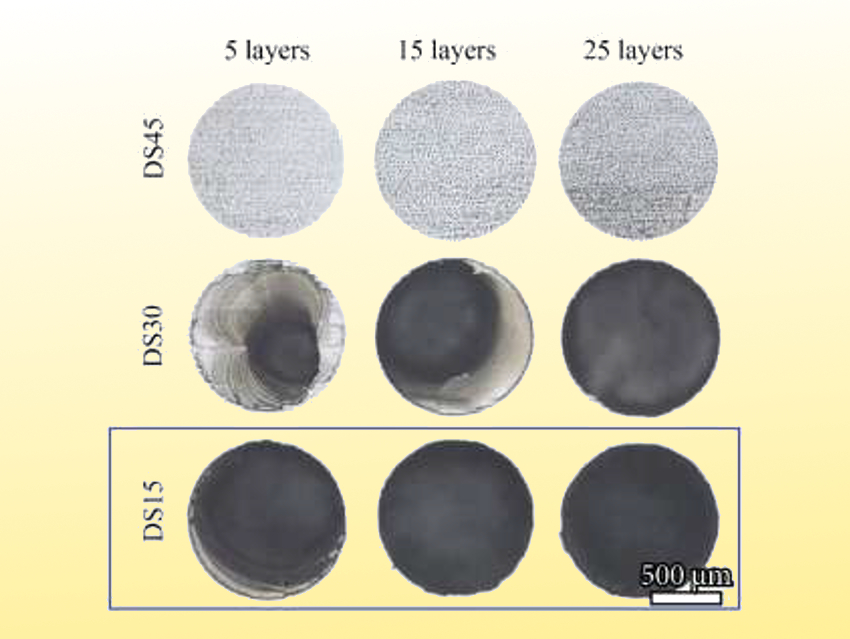Lithium-ion batteries are used to power portable electronic devices—from smartphones to electric cars. Miniaturized electronics require miniaturized batteries, and thin-film lithium-ion batteries are a good candidate for such applications. The fabrication of such batteries requires new production methods. Inkjet printing, for example, could be used to prepare thin films.
Maxim Yu. Maximov, Peter the Great Saint‐Petersburg Polytechnic University, Russia, and colleagues have developed inkjet-printed lithium-rich cathode materials for thin-film lithium-ion batteries. The team used lithium- and manganese-rich cathode materials such as Li1.15K0.05Mn0.54Ni0.13Co0.13O2 in the inks, together with carbon black to improve conductivity and polyvinylidene fluoride (PVDF) as a binder to adjust the inks’ viscosity.
The team then used these inks to print cathodes for miniaturized batteries. They optimized the drop spacing (DS) and the number of printed layers (pictured). A maximum concentration of 0.03 wt% of active material in the ink was achieved. The specific discharge capacities of the inkjet-printed cathodes are comparable with the discharge capacity values of electrodes fabricated using conventional technologies.
- Inkjet Printing of Li‐rich Cathode Material for Thin‐Film Lithium‐Ion Micro‐Batteries,
Denis S. Kolchanov, Ilya Mitrofanov, Artem Kim, Yury Koshtyal, Aleksander Rumyantsev, Ekaterina Sergeeva, Alexandr Vinogradov, Anatoly Popovich, Maxim Yu. Maximov,
Energy Technol. 2019.
https://doi.org/10.1002/ente.201901086

